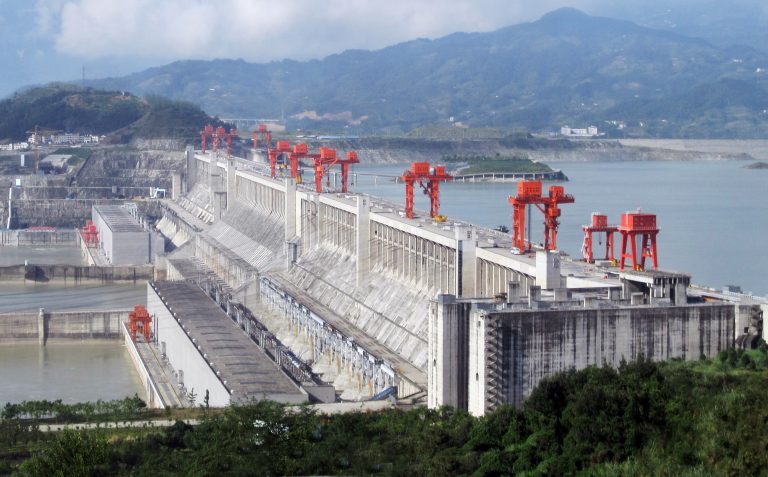
China is investing heavily in hydropower as a way to meet its growing energy demand and reduce its reliance on fossil fuels. Hydropower is a renewable and low-carbon source of electricity that uses the force of water to generate power.
What are the benefits of hydropower?
Hydropower is clean and green. Unlike coal, oil, or gas, hydropower does not emit greenhouse gases or air pollutants that contribute to climate change and health problems. Hydropower is reliable and flexible. Hydropower plants can adjust their output quickly and efficiently to match the fluctuations in electricity demand, providing stability and security to the grid.
Hydropower is affordable and competitive. Hydropower has low operating and maintenance costs and can provide electricity at lower prices than other sources of energy. Hydropower is multifunctional and beneficial. Hydropower projects can also provide other services, such as flood control, irrigation, water supply, navigation, recreation, and tourism.
Register for Tekedia Mini-MBA edition 19 (Feb 9 – May 2, 2026): big discounts for early bird.
Tekedia AI in Business Masterclass opens registrations.
Join Tekedia Capital Syndicate and co-invest in great global startups.
Register for Tekedia AI Lab: From Technical Design to Deployment (next edition begins Jan 24 2026).
China has the largest hydropower capacity in the world, with more than 350 gigawatts (GW) installed by the end of 2020, accounting for about 18% of its total electricity generation. China’s hydropower potential is estimated at more than 600 GW, which means that there is still room for expansion.
The International Energy Agency (IEA) projects that China will add another 120 GW of hydropower capacity by 2030, reaching 470 GW. This will help China achieve its goal of reaching carbon neutrality by 2060, as well as improve its energy security and diversify its energy mix.
However, hydropower development also comes with challenges and trade-offs. Hydropower projects often require large-scale construction of dams, reservoirs, and transmission lines, which can have significant environmental and social impacts. For example, hydropower projects can affect water availability and quality, biodiversity, ecosystems, and local communities.
The IEA report recommends that China adopt a more sustainable and integrated approach to hydropower development, taking into account the environmental and social costs and benefits of each project. The report also suggests that China enhance its cooperation with neighboring countries on transboundary water management, as well as promote regional power trade and integration.
How does China plan to reduce carbon emissions?
China is the world’s largest greenhouse gas emitter, accounting for about 28 percent of global emissions in 2019. In September 2020, President Xi Jinping announced that China aims to peak its carbon dioxide emissions before 2030 and achieve carbon neutrality before 2060.
This means that China will balance its emissions with removals by natural or artificial means, such as forests or carbon capture and storage. This pledge was widely welcomed as a major boost for global climate action, as China is the first major developing country to set a net-zero goal.
To achieve this goal, China has also set specific targets for 2030, which include:
Lowering its carbon intensity (the number of emissions per unit of GDP) by over 65 percent from the 2005 level. Increasing the share of non-fossil fuels in primary energy consumption to around 25 percent. Increasing the total installed capacity of wind and solar power to over 1.2 billion kilowatts. Enhancing its forest stock volume by 6 billion cubic meters from the 2005 level.
To implement these targets, China has released an action plan for reaching peak carbon emissions by 2030, which outlines measures for controlling carbon growth in various sectors of the economy, such as energy, industry, transport, construction, agriculture and waste management. Some of the key measures include:
Accelerating the development of renewable energy and promoting its integration into the power grid. Phasing down coal consumption and strictly controlling new coal-fired power projects. Promoting energy efficiency and conservation in industrial production and consumption. Developing low-carbon transport modes and infrastructure, such as electric vehicles, high-speed railways and urban rail transit.
Despite its efforts, China still faces many challenges in achieving its carbon goals, such as:
Balancing its energy security and economic development needs with its environmental commitments. Managing the social and economic impacts of the energy transition, such as employment, income distribution and regional disparities. Enhancing its technological innovation and international cooperation to overcome technical and financial barriers. Increasing its public awareness and participation in climate action.
Hydropower is a key component of China’s energy transition and green development. By investing $450 billion in hydropower projects by 2030, China is demonstrating its commitment to renewable energy and climate action. However, China also needs to ensure that its hydropower development is balanced and responsible, minimizing the negative impacts and maximizing the positive outcomes for people and the planet.



